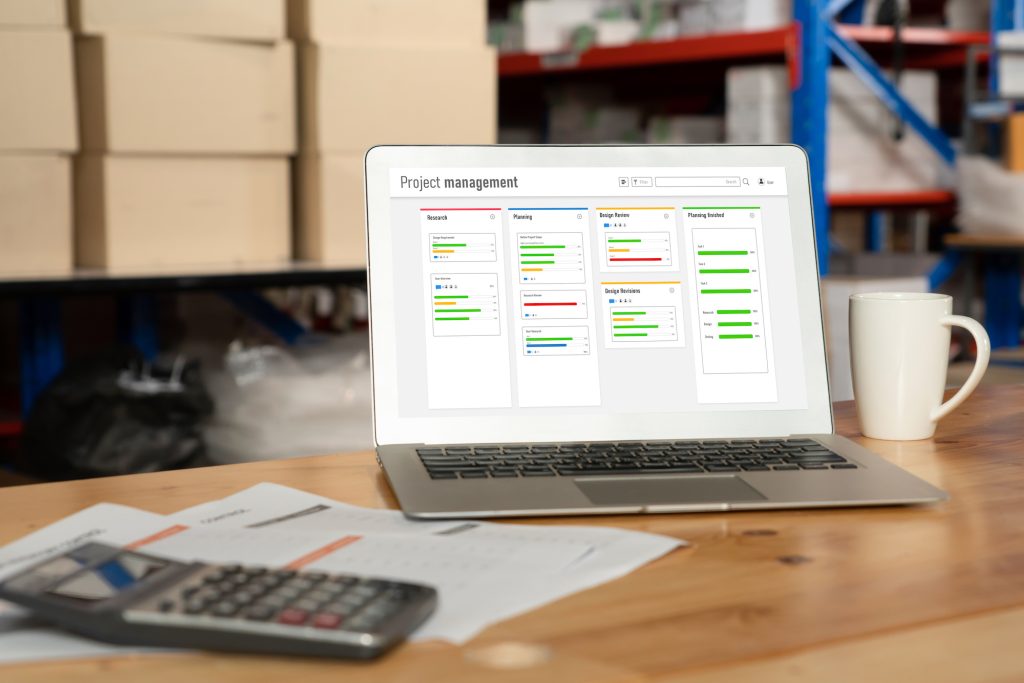- Understand what ERP is and its significance in modern businesses
- Learn the benefits of ERP implementation in business acquisitions
- How to understand the ERP implementation process
- The main methods of implementing ERP systems and how to choose between them
- The risks of not implementing ERP in your business or organization
In today’s ever-evolving business landscape, organizations are undergoing significant transformations in their operations. One powerful solution at the forefront of this revolution is Enterprise Resource Planning (ERP). This comprehensive system is reshaping the way businesses function by simplifying processes, integrating functions, and enhancing overall efficiency.
ERP is more than just a software system; it’s become a vital asset for modern businesses. It empowers companies to efficiently manage data, make informed decisions, and optimize costs, making it an indispensable tool in the corporate toolkit.
But what’s the connection between ERP and business acquisitions? Let’s delve into this intriguing relationship and uncover how ERP systems play a pivotal role in facilitating and optimizing the complex process of business acquisitions.
ERP: Making Sense of Things
When one company acquires another, it often inherits a mishmash of unique processes, software systems, and data management practices that can be challenging to integrate smoothly.
This diversity can lead to operational inefficiencies, inconsistent data, and uncontrolled costs. That’s where ERP implementation comes into play. It offers an excellent opportunity to standardize, centralize, and harmonize these processes, facilitating seamless integration of the acquired business into the existing ecosystem.
In this article, we’ll explore the importance of ERP implementation in business acquisitions and how it can benefit organizations across various industries. ERP is the ultimate key to success in today’s competitive business environment, from streamlining operations and improved decision-making to enhanced customer service and cost savings. We’ll also delve into the intricacies of the ERP implementation process, the various methods of implementation, and the risks organizations face when they neglect the potential of ERP systems.
What is ERP?

Enterprise Resource Planning (ERP) refers to the process of implementing software and systems that help organizations manage and streamline various aspects of their operations.
This includes integrating and centralizing functions and data across an organization into a single unified system, typically using software applications. Functions that can be managed through ERP include finance, human resources, inventory management, procurement, manufacturing, and sales.
ERP systems automate tasks, provide real-time data, and reduce manual errors, which makes operations more efficient. Additionally, ERP systems centralize data from various departments, providing a single source of truth that enhances data accuracy and consistency.
With access to real-time data and analytics, ERP systems enable better-informed decision-making at all levels of an organization. ERP can lead to cost savings, such as reduced inventory costs and optimized resource utilization. These systems can also help companies provide better customer service by ensuring accurate and timely order processing, inventory management, and other customer-related functions.
ERP systems often include tools to help companies adhere to regulatory requirements and generate comprehensive reports, which is critical in today’s business environment.
Effective ERP systems can grow with a company’s needs, allowing for easy scalability as the organization expands. Implementing ERP can provide a competitive edge by enabling more efficient and responsive operations. For companies with international operations, ERP systems can support multi-currency, multi-language, and multi-location functionalities.
Importance of Implementing ERP
Acquiring a new business often involves inheriting unique processes, software systems, and data management practices. Implementing an ERP system provides a chance to standardize and integrate these processes, streamline operations, and optimize costs. ERP systems also enable financial reporting, supply chain integration, HR functions, compliance, and customer service. They are scalable and can accommodate growth potential.
Benefits of ERP Implementation
Implementing an Enterprise Resource Planning (ERP) system benefits organizations across various industries. Some of the key benefits of ERP implementation include:
- Streamlined Business Processes: ERP systems help streamline and automate various business processes, reducing manual effort and minimizing errors. This leads to increased efficiency and productivity.
- Data Integration: ERP integrates data from different departments and functions, providing a centralized source of truth. This ensures data consistency and accuracy, reducing data entry redundancy and errors.
- Improved Decision-Making: With real-time data and reporting capabilities, ERP systems empower organizations to make informed decisions quickly. Access to data analytics and insights helps in better strategic planning and forecasting.
- Enhanced Customer Service: ERP systems can improve customer service by providing easy access to customer information, order history, and support inquiries. This leads to more personalized and efficient customer interactions.
- Cost Reduction: ERP systems can lead to cost savings through better resource allocation, reduced inventory holding costs, and streamlined processes. It helps identify areas where operational efficiency can be improved.
- Compliance and Reporting: Many ERP systems offer tools to ensure compliance with industry regulations and generate detailed reports. This is essential for meeting legal requirements and conducting internal and external audits.
- Inventory Management: ERP systems enable organizations to track inventory levels in real-time, reducing carrying costs and ensuring that products are available when needed without overstocking.
- Improved Supplier and Procurement Management: ERP can help optimize procurement processes by automating requisitions, purchase orders, and supplier management. This can lead to better negotiation and reduced procurement costs.
- Financial Management: ERP systems offer comprehensive financial management capabilities, including budgeting, forecasting, and financial reporting, which help organizations manage their finances more effectively.
- Scalability: ERP systems are designed to grow with an organization. They can adapt to changing business needs, making accommodating expansion and increasing transaction volumes easier.
- Global Operations: For companies with international operations, ERP systems often provide support for multiple currencies, languages, and regulatory requirements, making it easier to manage global business processes.
- Competitive Advantage: Implementing ERP can provide a competitive edge by enabling organizations to operate more efficiently, respond quickly to market changes, and deliver better products and services.
- Employee Productivity: ERP systems can simplify and automate routine tasks, allowing employees to focus on more value-added activities. This can boost overall workforce productivity.
- Data Security and Integrity: ERP systems typically include robust security measures to protect sensitive company data and ensure its integrity. This is crucial for safeguarding critical business information.
- Innovation and Adaptability: ERP systems evolve over time to incorporate new technologies and industry best practices, helping organizations stay innovative and adaptable in a rapidly changing business landscape.
ERP Implementation Process

The ERP (Enterprise Resource Planning) implementation process is a complex and multifaceted endeavor that involves planning, designing, configuring, testing, and deploying an ERP system within an organization. The process typically consists of several key phases:
- Project Initiation and Planning:
- Define project objectives, scope, and budget.
- Assemble an ERP project team comprising key stakeholders, business process experts, and IT professionals.
- Develop a detailed ERP Implementation project plan, including timelines, resource allocation, and milestones.
- Conduct a thorough risk assessment and mitigation strategy.
- Business Process Analysis and Documentation:
- Analyze and document existing business processes and workflows.
- Identify inefficiencies, redundancies, and areas for improvement.
- Define the “to-be” processes that the ERP system will support and develop process maps.
- ERP Software Selection:
- Evaluate and select an ERP software solution that aligns with the organization’s needs and goals.
- Consider factors such as functionality, scalability, vendor reputation, and total cost of ownership.
- Negotiate licensing agreements and contracts.
- System Design and Configuration:
- Collaborate with the ERP vendor to configure the system to align with the organization’s business processes and requirements.
- Customize fields, forms, and workflows.
- Design data migration strategies to transfer existing data into the ERP system.
- Development and Testing:
- Develop and program any custom code or integrations needed.
- Create and execute test cases to ensure the ERP system functions correctly and meets business requirements.
- Address and rectify any identified issues or bugs.
- Data Migration:
- Migrate existing data from legacy systems or spreadsheets into the ERP system.
- Verify data accuracy and integrity.
- Develop a data backup and recovery strategy.
- Training and Change Management:
- Provide training to end-users on how to use the ERP system effectively.
- Implement change management strategies to facilitate employee buy-in and smooth adoption of the new system.
- Pilot Testing:
- Conduct a limited-scale pilot implementation with a subset of users to test system functionality in a real-world scenario.
- Gather feedback and make necessary adjustments.
- Deployment and Go-Live:
- Deploy the ERP system for the entire organization, following a carefully planned timeline.
- Monitor system performance and user feedback during the initial weeks after go-live.
- Address any issues promptly.
- Post-Implementation Review:
- Assess the project’s success in meeting its objectives.
- Review lessons learned and gather feedback from end-users.
- Address any remaining issues or requirements, and plan for ongoing system maintenance.
- Ongoing Support and Maintenance:
- Establish an ERP support team or help desk to address user questions, issues, and system maintenance.
- Monitor system performance, apply updates, and optimize the system as needed.
- Continuous Improvement:
- Continuously evaluate and improve business processes and system usage based on data and feedback.
- Consider periodic system upgrades or enhancements to leverage new features and technologies.
ERP implementation is a substantial and often challenging undertaking, requiring close collaboration between business and IT teams, a clear ERP Implementation project plan, effective change management, and ongoing commitment to optimizing and evolving the system as the organization’s needs change.
It’s essential to approach the process with careful planning and a focus on long-term benefits and business transformation.
ERP Implementation Methods
There are two main methods of implementing ERP systems: the Big Bang Approach and the Phased Approach. Each approach has its own set of pros and cons.
When deciding between them, it’s important to consider your organization’s specific goals, risk tolerance, resources, and the nature of the ERP project.
Big Bang Approach
In the Big Bang approach, the organization switches from its existing systems to the new ERP system simultaneously. This means that all modules and functions of the ERP are implemented simultaneously across the entire organization.
It typically involves an intense, high-risk, and high-reward implementation process, as the organization transitions to the new system abruptly.
This approach can lead to significant disruptions and challenges, but it can result in a faster, more complete transformation. It is often chosen when the organization wants to achieve comprehensive changes quickly and is willing to accept the associated risks.
Phased Approach

The Phased approach divides ERP implementation into multiple phases or stages. Each phase focuses on specific modules or functions of the ERP system and is rolled out gradually across the organization.
The organization typically starts with essential modules, such as financials or inventory, and progressively adds more functionality over time.
The Phased approach is less disruptive than the Big Bang approach, as it allows for a more gradual transition and can mitigate the risks associated with a full-scale cutover.
This approach is often chosen when the organization prioritizes risk management, wants to maintain ongoing operations during the implementation, or has a complex and lengthy ERP project.
Risks of Not Using ERP
Not using an Enterprise Resource Planning (ERP) system can expose an organization to various risks and challenges, particularly in today’s competitive and data-driven business environment. Some of the key risks of not using ERP include:
- Inefficient Operations: Without an ERP system, organizations often rely on manual and fragmented processes, leading to inefficiencies, data redundancies, and a lack of process standardization.
- Data Inaccuracy: Manual data entry and multiple systems increase the likelihood of data errors and inconsistencies, leading to inaccurate decision-making and financial discrepancies.
- Limited Visibility: Without centralized data and reporting, gaining real-time insights into the organization’s performance and operations is challenging, making it difficult to respond to changing market conditions.
- Operational Inconsistency: Different departments may use disparate tools and systems, resulting in operational inconsistencies and misalignment between various parts of the organization.
- Slower Decision-Making: The absence of real-time data and analytics hinders quick and informed decision-making. This can lead to missed opportunities or delayed responses to issues.
- Higher Operational Costs: Manual processes, paper-based documentation, and data inconsistencies can increase operational costs and reduce profitability.
- Increased Risk of Errors and Fraud: Manual processes are more susceptible to errors and fraud, as they lack the automated controls and audit trails provided by ERP systems.
- Compliance Challenges: Meeting regulatory requirements and industry standards becomes more complex without a centralized system for managing and reporting on data, potentially leading to compliance violations.
- Customer Dissatisfaction: Without streamlined operations and accurate order processing, customer service quality may suffer, leading to customer dissatisfaction and potential loss of business.
- Inventory Management Issues: Manual inventory tracking can result in overstocking or understocking goods, impacting working capital and customer service.
- Missed Growth Opportunities: Inefficient processes can hinder the organization’s ability to scale and adapt to market changes, potentially missing out on growth opportunities.
- Difficulty in Managing Multiple Locations: Organizations with multiple locations or international operations may struggle to maintain consistency and control across various sites without centralized systems.
- Lack of Forecasting and Planning: Organizations may struggle with forecasting and strategic planning without the ability to analyze historical data and market trends.
FAQS
To make an ERP system successful, focus on clear objectives, stakeholder engagement, thorough planning, proper data migration, change management, testing and validation, phased implementation, post-implementation support, data security, & regular evaluation.
No, ERP (Enterprise Resource Planning) is unsuitable for every business. The suitability of ERP depends on factors like the organization’s size, complexity, industry, budget, and specific needs. Small businesses with straightforward operations may find ERP systems too complex and expensive. However, larger organizations or those with complex processes often benefit from ERP to streamline operations, data management, and decision-making. It’s essential to assess the unique requirements and constraints of the business before deciding if ERP is a suitable solution.
ERP (Enterprise Resource Planning) can be a good strategy for businesses when it aligns with their specific needs, goals, and resources. It offers advantages like process streamlining, data integration, and improved decision-making. However, the effectiveness of ERP depends on careful planning, implementation, and ongoing maintenance. Assessing your organization’s requirements and evaluating the costs and benefits is crucial in determining if ERP is a suitable strategy for your business.
Maintaining an ERP system involves regular updates, performance monitoring, user support, data management, compliance, vendor relationships, and continuous improvements. These practices are essential to ensure the ERP system’s long-term effectiveness.
Conclusion
ERP implementation is crucial when acquiring a new business because it facilitates the integration, standardization, and efficient operations management, which are key to a successful business acquisition. It helps in achieving operational synergy, cost control, and risk management while also positioning the organization for future growth and competitive advantage.
Implementing ERP offers numerous benefits, from improved operational efficiency and decision-making to cost savings and enhanced customer service.
Implementing ERP offers numerous benefits, from improved operational efficiency and decision-making to cost savings and enhanced customer service. It is a strategic investment that can have a profound impact on an organization’s ability to thrive and compete in the modern business world.
But, implementing ERP is a substantial undertaking that requires careful planning, collaboration, and ongoing attention. Successful implementation can result in significant improvements in organizational efficiency, data accuracy, and decision-making capabilities. However, it’s important to be prepared for challenges and setbacks and to have a well-defined plan for ongoing support and system maintenance.
Neglecting the potential of ERP systems exposes businesses to risks such as inefficiency, data inaccuracies, compliance challenges, and competitive disadvantages. ERP is a key driver of success and transformation in today’s data-driven business environment, enabling organizations to operate efficiently and thrive in a competitive landscape.
If you are interested in learning more about implementing ERP systems for business acquisition, developing and learning more business acquisition strategies, and other methods for business growth, you should consider contacting Acquira and joining our Accelerator program.
You’ll gain access to MBA-level training that can show you how to find, vet, and acquire a seven-figure business in as little as seven months. You’ll also get access to our success coaching services, weekly group calls, and connect with other link-minded entrepreneurs.
Space in the program is extremely limited. To see if you’re eligible, simply fill out the form below.
Key Takeaways
- ERP integrates and centralizes organizational functions and data into a single unified system, typically using software applications.
- Implementing ERP improves operational efficiency, decision-making, cost savings, and customer service.
- The ERP implementation process involves planning, designing, configuring, testing, and deploying an ERP system within an organization.
- The Big Bang Approach and the Phased Approach are the two main methods of Implementing ERP. Consider the organization’s specific goals, risk tolerance, resources, and the nature of the ERP project when choosing between them.
- Not using an ERP system can expose you to various risks, including inefficiency, inaccuracy, operational inconsistencies, compliance challenges, and competitive disadvantages.
Acquira specializes in seamless business succession and acquisition. We guide entrepreneurs in acquiring businesses and investing in their growth and success. Our focus is on creating a lasting, positive impact for owners, employees, and the community through each transition.



